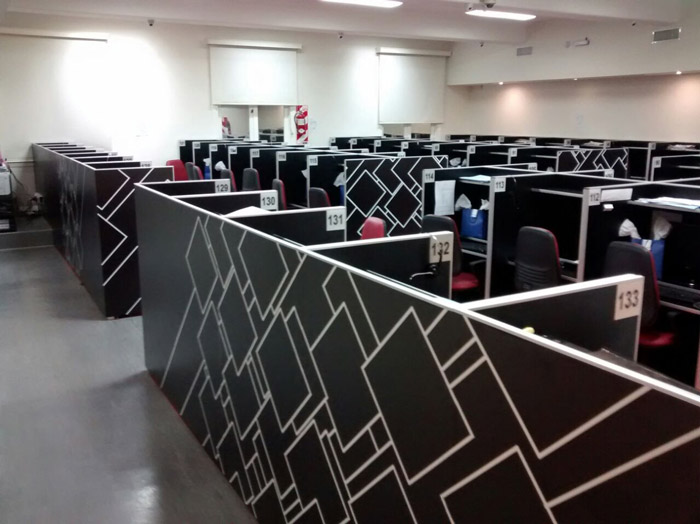Business Process Outsourcing (BPO) is one of the most dynamic, robust, and fastest growing sectors in the Philippines right now and plays a major role in the country’s growth and development. It provides quality jobs and encourage economic activity and investment throughout the entire country. The BPO industry in the Philippines has ‘edged out India’ as the call center leader of the world.

The BPO industry started from a single contact center which is the Accenture Global Resource Center and was founded by Frank Holz in 1992. This marked the beginning of the local BPO industry in the country.
The Philippine Congress passed the Special Economic Zone Act in 1995, thus establishing the Philippine Economic Zone Authority which provides lower area requirements for developments and tax incentives. This Act consequently attracted foreign investors.
It was 1997 when Sykes Asia set up a shop and becomes the first multinational BPO in the Philippines. Then came Jim Franke and Derek Holley, founder of eTelecare, as the first call center in the country.
In 2001, US-Based outsourcing center called People Support had its operations moved to the Philippines, generating 8,400 jobs for the country. Followed by the Convergys Corporation in 2003 which opened up two more call centers here in the Philippines. It was the time when Jack Freker, the President of Convergys Corporation, announced the incorporation of the Philippines in the revenue generation plan and the global expansion of the company.
In 2005, accounting for 2.4% of the country’s GDP, the Philippine acquired over 3% of the global BPO market. A year after, with ePLDT Ventus leading in the BPO industry, domestic economy increased by 5.4%, thus 11,000 more people were employed. In 2010, the Philippines were then declared the world’s BPO capital. From this point, the BPO industry continued to grow and generate more revenue, with the industry providing the most job opportunities in the private sector.
The unemployment rate stayed between 8-11% in the Philippines since 1980s. The BPO industry has the most substantial contribution to economic growth.
Due to the lower costs of producing specific goods in another country, outsourcing has become a common business strategy for many multinational firms. There are two common practices of outsourcing and these are using the third party outsourcing or a captive market. This two is different based on the level of management, cost effectiveness, or the need for managerial control. Third party outsourcing using project based is primarily used for business activities with irregular frequencies or one-off projects. The usual costing method makes use of time and material costs and the fixed costs. The Dedicated Development Center is primarily used in business cases when there are hanging requirements. It could be used for some long-term goals for developing technology or software. This is preferred when resource requirements are lower in the outsourced country than the home country hence developing a comparative advantage. The customers are changed for fixed fees, which are all the wages of full-time employees.
In the Captive markets, the core or crucial business activities are needed to be run at cheaper costs. The rationale for employing such a setup is to cater to long term strategic plans involving high managerial control. The two major ways of setting up a captive market are the DIY or “start from scratch” model and the Build Operate Transfer model. This way, the business practices and operations are still running within and by the film which mitigates risks of disclosure of sensitive information. In the Philippines a good example of this set up is American Express, JP Morgan, and Wells Fargo.
In the DIY, or “Start from Scratch” Model, the usual flow is for the company to develop all its resources in the new designated area or country of operations. This involves the purchasing of property and equipment. The acquisition of property and equipment is done by contacting a third party liaison in the country of operation. The companies that have high levels of market knowledge and analytics prefer this model.
In the Build Operate Transfer Model, the practice is to contact a third party vendor in order to develop a contract in which the vendor is the one who develops the property, sources the employees, and manages the BPO center for the first designated period or amount of time. After which the company who contracted the vendor comes in and takes over the operations. The common practice is to have managerial and training staff of the company join at some midpoint of the period of the vendor’s development to have specialized training in order for the employees to meet company standards. This model is preferred by companies that do not have any specialized expertise in the new country of operations hence needing a local partner or vendor to assist with market entry strategies.
The Philippines continues to be a promising prospect for the BPO industry. It was August 2014 when the Philippines hit an all-time high for employment in BPO industry, from 101,000 workers in 2004 to over 930,000 in just first quarter of 2014.
Growth in the BPO industry continues to show significant improvements here in the Philippines, and is projected to experience an overall positive growth rate in the next coming years. This year it has generated 1.3M new jobs with 17% annual growth. Industry experts predict the industry revenue to reach $55 billion by 2020.
Though the overall outlook in the BPO industry is positive, there remains the issue of forecasted threats cause by policy shifts undertaken by the country.